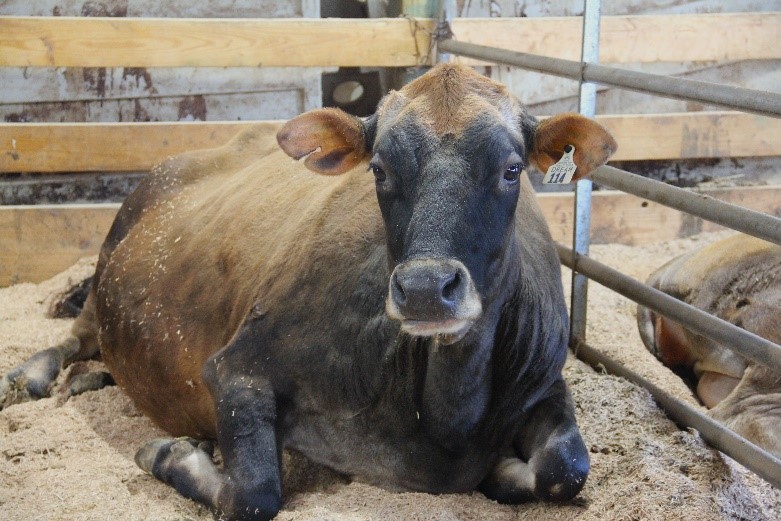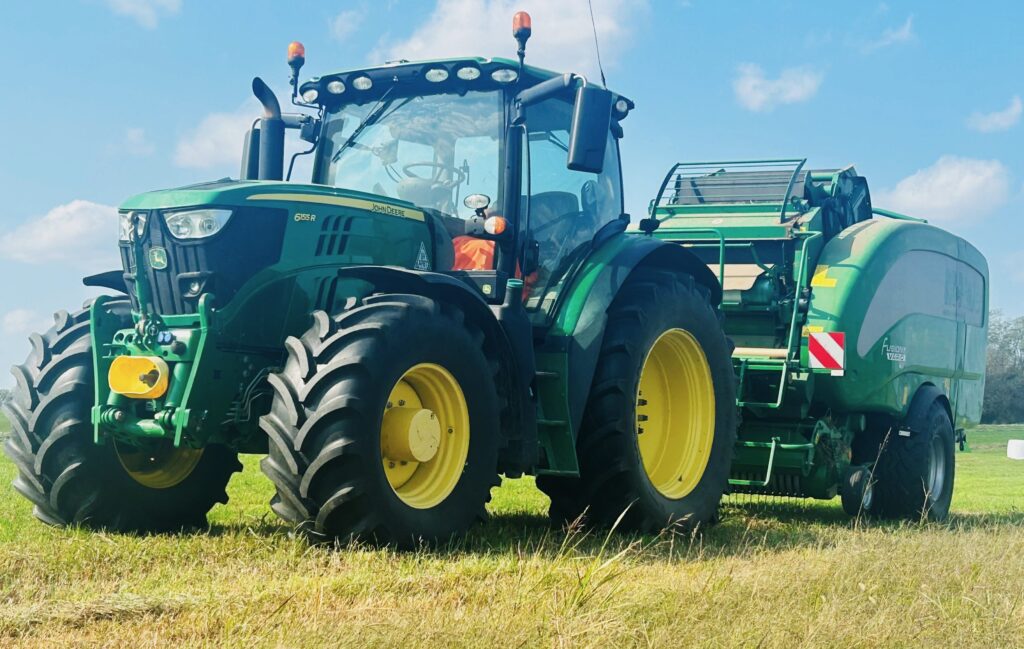
The Heart of Keightley-Core Jersey Farm: Family, Passion, and Legacy
By Ansley Roper; University of Tennessee Extension Specialist
For those involved in the world of dairy cattle showing, the name Keightley-Core Jersey Farm may evoke images of top-tier genetics, award-winning animals, and, of course, Dream, a legendary Jersey whose remarkable achievements continue to inspire and who plays a pivotal role in the farm’s legacy, providing embryos to maintain the farm’s tradition of excellence. For the Core family, Keightley-Core Jersey Farm is so much more than just a successful business. It’s their livelihood, a labor of love, and a home where each cow has a name and a story. It’s a place where they not only care for their animals but also raise their children, weaving family, passion, and purpose into every aspect of the farm, nestled right in Salvisa, Kentucky.
The Cores have an extensive background in the industry, with Brady Core being a third-generation farmer on his mother’s side of the family, and a fourth-generation farmer on his father’s side. Along with a few part-time employees and gracious volunteers, their operation is truly family run and consists of registered Jerseys with an emphasis on show type, housed in a compost pack barn. Their primary focus lies within quality milk and forages, with 90% of their own feed grown on farm. According to Brady, the way they do things on their farm may not be as high input as larger farms, but they take a lot of pride in their conservation practices and aim to maximize the land.
SDBII Funding: Improving Labor Efficiency and Sustainability
When the Cores looked at what needed improvement on their farm, they found their largest opportunity for improvement was labor efficiency, leading them to apply for and receive funding from the 2023 Infrastructure Improvement Grant. The funding received in 2023 allowed them to purchase a new Meyer Vertical Beater Spreader to achieve more frequent and shorter cleaning sessions of their pack barn, resulting in less disruption and reduced cow stress. The new spreader provided more opportunities to haul compost, therefore offering a more efficient and precise spreading rate.

To further improve sustainability and labor efficiency, the Cores received funding from the 2024 Farm Infrastructure Improvement Grant to assist in the purchase of a new hay baler that includes retractable knives for chopping forages during the baling process, moisture sensors and scales to monitor dry matter content, automated single-bale plastic wrapping, a crop preservative applicator, and a smart monitor with inventory memory. While this was an expensive project upfront due to increased costs in materials and a larger tractor, Brady emphasizes the importance of investigating the opportunity cost, as both of their projects decreased necessary labor and increased forage quality, thus saving time, energy, and costs overall.

A Glimpse into the Future: Exploring the Possibility of Processing
As for many family-run operations, the Cores are putting forth every effort to ensure the next generation can continue the family’s history on the farm in the future. In Brady’s eyes, the logical next step and “the only long-term sustainable” way to do this is to begin processing. With this in mind, the Cores recently received the 2024 Dairy Business Planning Grant to complete a feasibility study to determine the profitability of a creamery and diagnose potential pitfalls before they occur.
“The SDBII program is stair stepping me into saving our farm because the infrastructure grants helped me get equipment that we couldn’t afford that labor efficiency wise, will keep me competitive and secondly, we must secure our farm and on-farm processing is the way to do that. If we can secure that, we will look at opportunities within agritourism, automated milk harvesting, and various energy saving technologies.” – Brady Core
Fearless and Intentional: Advice for Future Applicants
When asked what advice he would offer to new applicants for funding, such as SDBII grants or otherwise, Brady emphasizes the importance of intentionality when deciding on which project to focus on. While he does advise others not to be afraid to go after a big project, he believes that he has been successful with his previous applications because he focuses on the part of the farm that needs the most improvement and creates a project to make that improvement. He also notes that it’s good to be transparent about upfront costs, funding needs, and end goals to allow the reviewers to understand that the project is thoroughly planned, and the operation is prepared for the project onset.